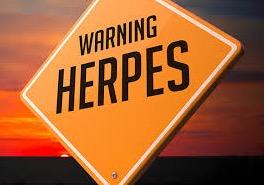
NanoBio Corporation, a Michigan based biotech, just announced that they have received a $1.5 million grant (1) from the National Institute of Allergy and Infectious Diseases (NIAID) to run Phase II studies on its vaccine candidate for prevention (2) of herpes simplex virus-2 (HSV-2) infection (3). The company developed a nanoemulsion oil-in-water (NE) technology (4)— a mixture of very small beads of oil and water—to help deliver vaccines both intranasally and intramuscularly.
During pre-clinical studies, which were conducted by researchers at the Cincinnati Children's Hospital Medical Center, a nasallly administered version of NanoBio's NE vaccine has been studied in guinea pigs—a model that is known to be predictive of efficacy in humans. The results were impressive.
Dr. David I. Bernstein, Professor of Pediatrics the Medical Center said, "NanoBio's intranasal vaccine is one of the only vaccine candidates we've studied that has shown efficacy in both the prophylactic and the therapeutic animal models... [b]ased on our data with this unique approach, we look forward to seeing the intranasal NE vaccine progress to human clinical studies."
His enthusiasm would seem to be valid. Guinea pigs that were given the intranasal NE HSV-2 vaccine were protected 92 percent of the time, compared to eight percent for guinea pigs that were not treated. This demonstrates prophylaxis (prevention).
Therapeutic efficacy was demonstrated in another experiment. Guinea pigs that were already infected with HSV-2 were likewise vaccinated. Following vaccination, the NE HSV-2 vaccine reduced recurrent lesions and viral shedding by more than 50 percent as compared to animals that received no treatment. No adverse events were observed in any of the animals that received the vaccine.
The company believes that their nanoemulsion oil-in-water (NE) technology plays an important part in the formulation of the vaccine, and can be applied to nasal, intramuscular, and subcutaneous administration of its vaccines (5).
When used with intranasal vaccination, the NE adjuvant elicits both mucosal and systemic immunity. The technology is therefore uniquely suited to enable vaccines for both respiratory and sexually transmitted infections, which involve pathogens that enter the body across mucosal surfaces. The mucosal immunity elicited by NE vaccines provides protection against these infections at their port of entry, and has demonstrated the potential to reduce carriage of the associated pathogen.
"Most infectious pathogens enter the body across mucosal surfaces. Yet few vaccines today provide mucosal immunity. NanoBio’s vaccines are different."
For other ACSH articles on herpes vaccines, see:
A Vaccine For Herpes Erupts In The News
Herpes Vaccine Update: Exciting News, But Don't Throw Away Condoms Just Yet
New, Promising Herpes Vaccine: Interview With Dr. William Halford
And Then There Were Three: A New Trivalent Herpes Vaccine Enters The Scene
Notes:
(1) The grant is part of the NAIA's Small Business Research Innovation grant program. It is funded by the NIH.
(2) There are no therapeutic vaccines for any infectious disease. If any of the four candidates now in the clinic succeed, it would be the first. At this time, all vaccines against pathogens are prophylactic (preventative).
(3) Comparison of NanoBio with what's already out there (Some of this is inference and speculation because of incomplete information):
- Rational Vaccine's Theravax HSV-2 candidate claims it has the potential to both prevent and treat HSV-2 and HSV-1 infections, but the company has only conducted a small pilot study in a foreign company.
- Genocea's GEN-003, a sub-unit vaccine, seems to be inducing a weaker immune response than Theravax but they are doing real trials in the US, so we don't want to compare them unfairly.
- The University of Pennsylvania's trivalent vaccine induces immunity and blocks the action of elements of the immune system that inhibit the immune response. It worked better in guinea pigs than in monkeys.
Impressions: The Penn and NanoBio vaccines seem to be roughly similar at this point; efficacious in animals, but not tested in humans. Theravax claims it has performed well in animals (yet won't show data) and humans (a small pilot study in a foreign country, also unpublished).
(3) Although HSV-2 has traditionally considered to be "genital herpes," this is no longer true. In young women, HSV-1 ("cold sore") is now the predominant cause of genital herpes.
(4) Oil and water do not mix, which has been a thorn in the side of formulation chemists forever. For example, propofol, which puts you into La La Land prior to surgery or a procedure (colonoscopy), is extremely insoluble in water. This is why it must be administered as an emulsion containing glycerine, soybean oil, glycerol, and purified egg phosphatide. NE is another emulsifying technique.
(5) NE is also an adjuvant—an additive that enhances properties of vaccines. Adjuvants can increase or prolong immune responses. These are commonly used in vaccines.



